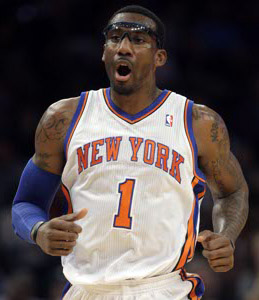 For power forward Amare Stoudemire, the past few years in New York have been nothing short of a dreadful nightmare.
For power forward Amare Stoudemire, the past few years in New York have been nothing short of a dreadful nightmare.
After reviving the New York Knicks with dominant play in his first season and leading them to the playoffs for the first time in a decade, it has been just about all downhill for the former All-Star.
To recap some of the things that have gone wrong since that glorious year: he nearly destroyed his hand after slapping a glass casing surrounding a fire extinguisher out of frustration during a playoff series, has suffered through multiple knee surgeries, became a backup to – gulp – Andrea Bargnani, has seen limited playing time due to medical restrictions, and never truly got comfortable playing alongside Carmelo Anthony.
Due to all the injuries and restrictions, Stoudemire had mostly become an afterthought. Some even wondered at times why he saw any playing time at all. He persevered through it all – as he has always done through much of his career – and has been playing fantastic on both ends of the floor (believe it or not) for the team since being inserted into the starting lineup on March 3. The Knicks have gone 7-1 since the change, are on a seven-game winning streak and pushing to make it to the playoffs no matter how late it appears to be.
During an insightful interview in his personal home in New York City with Jared Zwerling of Bleacher Report, Stoudemire shared some deep thoughts about his mindset during all the difficult times:
Last season was extremely tough. I came back from left knee surgery on New Year’s Day, played well and then I got hurt again and needed right knee surgery in March. It was tough because I wanted to do more, I wanted to be myself as a player and really provide for the city and for the state and just for the team, but I couldn’t. It was very frustrating, a lot of long nights.
My energy is also not the same when I know if I’m injured because I want to provide more. I can’t be at the level that I want to be because I can’t show them what I’m talking about. I can’t really lead from the bench; I need to be playing. And so it makes me a little more reserved as far as leading and not playing. That’s frustrating because I’m a natural-born leader and I love to lead and lead by example, and then show guys and teach them. I love that aspect of the game of basketball.
[…]
I think every great player has a goal, a vision, of what they want to be. And when hiccups happen from an injury standpoint, you can’t let that take you off track. It may reduce the time of you getting there, but you just can’t say, “I can’t achieve that any more.” My goal is to become a Hall of Famer. I want to keep working and keep training and focus on getting better and being a great teammate and winning, so I can eventually get to that goal. That’s what fueled me to keep fighting and keep achieving.
He also touched on the microfracture surgery he had back in 2005. Apparently, he had no idea what he was getting himself into:
My intense training focus first started after my microfracture surgery in 2005. That was the hardest recovery I’ve ever been through in my life. I actually didn’t know what a microfracture was. If I had known what a microfracture was, I would have never gotten that procedure. Going into surgery, it actually wasn’t guaranteed that I was going to have a microfracture.
The doctors said, “There’s an option between a scope or a microfracture depending on how big the injury is.” So I said, “OK.” They said, “We’re going to go in and see, and if it’s a microfracture we’re just going to have the procedure.” So I wake up and there’s a microfracture, so I’m like, “Holy smokes. How long am I out for?” They said, “Six to 12 months.” I couldn’t walk for like two months after the procedure. No weight bearing and I had a machine that flexed my knee for me. I was like, “Man, this is crazy.”
And indirectly, he gave a bit of a shot to Mike Woodson by saying he has felt as good as he does now all season long – an indication that there was no reason to limit him for this long:
The entire season, I’ve been feeling great, and it’s just showing now with the consistency of minutes and play. Also, my good starts carry momentum throughout the game. To be honest, I’ve felt active and explosive all season. My preparation is still the same, my game is still the same, my explosiveness is still there as it was to start the year off. My training regimen was to be explosive and dominant from the start of the season, so that hasn’t really changed at all, to be honest with you.
His point is well-stated, but Woodson’s actions are understandable. The power forward repeatedly talked about how great he felt last season, only to undergo another knee surgery as soon as Woodson started to hand him more minutes. This season, the coach made sure he didn’t make the same mistake again, probably for Stoudemire’s own good.
At this point, no one really knows how his knee situation will play out for the rest of his career. It’s probably best to remain cautious than being reckless and playing him 30-plus minutes every game.
The bottom line is, though, he hasn’t looked this good in a long time. If he can somehow find a way to maintain his health, it will be quite intriguing to see how his role evolves in a Triangle-oriented system and what that translates to in terms of what the future will hold once his contract expires after next season. Will Phil Jackson pay him to stick around beyond next year? For what it’s worth, Stoudemire is not interested in going anywhere else:
I want to be a Knick for life and win multiple championships here. I don’t want to go anywhere else, especially with Jackson coming in. He has an incredible legacy; it’s probably unmatched. With a leader like that, it can only become a positive output with that type of leadership. He’s been around great organizations, from Chicago to L.A., so now joining us with the Knicks, it’s great to see. Regarding the Triangle offense, it’s funny because I’ve been hearing that it would be great for me for the past six years. It could be possible that we implement the Triangle offense, and I just can’t wait to perfect whatever system we’re going to be in. I’m ready to get to work now.
HOW GOOD CAN ANTHONY DAVIS BE?:
Coach Nick of Bballbreakdown explained why Anthony Davis is so good, yet still has his flaws. If you’re intrigued with the wiry power forward and want to learn more about his game, this is the clip to watch:
CLIP OF THE DAY:
Check out the disrespect Carmelo Anthony showed Mike Woodson during a timeout against the Indiana Pacers. Think Phil Jackson is going to keep Woodson around beyond this season?
OTHER NEWS FROM AROUND THE LEAGUE:
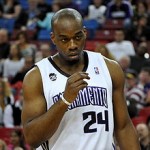 Carl Landry underwent surgery on his knee, from The AP: “The Sacramento Kings say power forward Carl Landry is expected to make a full recovery and be ready for next season after undergoing arthroscopic surgery on his right knee. The team says Dr. David Altchek at the Hospital for Special Surgery in New York performed the surgery Thursday. Landry signed a $26 million, four-year contract with the Kings in July after helping the Golden State Warriors reach the second round of the playoffs last year. But he played just 18 games this season after injuries to his left hip flexor and right knee, averaging 4.2 points and 3.2 rebounds in 12.9 minutes.”
Carl Landry underwent surgery on his knee, from The AP: “The Sacramento Kings say power forward Carl Landry is expected to make a full recovery and be ready for next season after undergoing arthroscopic surgery on his right knee. The team says Dr. David Altchek at the Hospital for Special Surgery in New York performed the surgery Thursday. Landry signed a $26 million, four-year contract with the Kings in July after helping the Golden State Warriors reach the second round of the playoffs last year. But he played just 18 games this season after injuries to his left hip flexor and right knee, averaging 4.2 points and 3.2 rebounds in 12.9 minutes.”
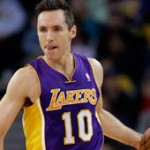 It seemed highly doubtful that Steve Nash would play again this season, but that will look to change immediately, according to Adrian Wojnarowski of Yahoo Sports: “After five weeks on the sidelines, Los Angeles Lakers guard Steve Nash is planning a return to the lineup on Friday night, league sources told Yahoo Sports. The Lakers, left with only one healthy point guard, are planning to use Nash as a backup to Kendall Marshall against the Washington Wizards at Staples Center. Nash, a two-time NBA MVP, participated in a full practice session with the Lakers on Thursday. After recently ruling out Nash’s return, Lakers coach Mike D’Antoni changed course on Wednesday and suggested Nash could return over the final 15 games of the regular season.”
It seemed highly doubtful that Steve Nash would play again this season, but that will look to change immediately, according to Adrian Wojnarowski of Yahoo Sports: “After five weeks on the sidelines, Los Angeles Lakers guard Steve Nash is planning a return to the lineup on Friday night, league sources told Yahoo Sports. The Lakers, left with only one healthy point guard, are planning to use Nash as a backup to Kendall Marshall against the Washington Wizards at Staples Center. Nash, a two-time NBA MVP, participated in a full practice session with the Lakers on Thursday. After recently ruling out Nash’s return, Lakers coach Mike D’Antoni changed course on Wednesday and suggested Nash could return over the final 15 games of the regular season.”
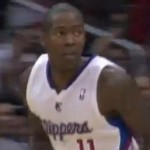 J.J. Redick and Jamal Crawford are practicing again for the Los Angeles Clippers, from Arash Markazi of ESPN LA: “Clippers guard J.J. Redick, who has missed the past 18 games with a bulging disk in his lower back, returned to practice for the first time in seven weeks. He is hopeful to return soon but likely will not play in Saturday’s game against the Detroit Pistons. Redick also missed 21 games earlier this season with a fractured right wrist… Clippers guard Jamal Crawford, who has missed eight of the last nine games with a strained left calf, returned to practice as well and is hoping to be back in the lineup Saturday. “He’s going to practice, and if he feels good, he’s going to play,” Rivers said of Crawford.”
J.J. Redick and Jamal Crawford are practicing again for the Los Angeles Clippers, from Arash Markazi of ESPN LA: “Clippers guard J.J. Redick, who has missed the past 18 games with a bulging disk in his lower back, returned to practice for the first time in seven weeks. He is hopeful to return soon but likely will not play in Saturday’s game against the Detroit Pistons. Redick also missed 21 games earlier this season with a fractured right wrist… Clippers guard Jamal Crawford, who has missed eight of the last nine games with a strained left calf, returned to practice as well and is hoping to be back in the lineup Saturday. “He’s going to practice, and if he feels good, he’s going to play,” Rivers said of Crawford.”
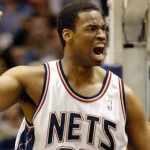 Jason Collins says one unnamed player has given him a hard time since returning to play in the NBA as an openly-gay player, from Stefan Bondy of Daily News: “He was tested once during his first month with the Brooklyn Nets, although the NBA’s first openly gay player understandably doesn’t want to give attention to the “knucklehead” or his comments. After all, most everything else about his groundbreaking experience on the court and in the locker room has been positive. And Collins handled the negativity like he anticipated with a silent disregard. “One player, one knucklehead from another team,” Collins said in an interview with the Daily News. “He’s a knucklehead. So I just let it go. Again, that goes back to controlling what you can control. That’s how I conduct myself just being professional.”
Jason Collins says one unnamed player has given him a hard time since returning to play in the NBA as an openly-gay player, from Stefan Bondy of Daily News: “He was tested once during his first month with the Brooklyn Nets, although the NBA’s first openly gay player understandably doesn’t want to give attention to the “knucklehead” or his comments. After all, most everything else about his groundbreaking experience on the court and in the locker room has been positive. And Collins handled the negativity like he anticipated with a silent disregard. “One player, one knucklehead from another team,” Collins said in an interview with the Daily News. “He’s a knucklehead. So I just let it go. Again, that goes back to controlling what you can control. That’s how I conduct myself just being professional.”
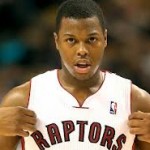 Kyle Lowry explained how he may have rubbed people the wrong way, from Woj: “”I struggled to prove that I belonged,” Lowry says. “My first couple years in the NBA, my fear was that I was going to go to the D-League – and maybe never get back to the NBA. I was picked 24th and that’s not the cushion that a lottery pick gets in the NBA. You get a few chances, and then you’re done. Then you’re just a label, never to be a frontline guy. “But I didn’t want to be a backup. I hated that label. I did not want to be a backup in this league. I wasn’t going to settle for it, and I think it rubbed people the wrong way. But I didn’t want to be labeled as a journeyman, or a guy who has the talent, but just can’t get it together. I wanted the label of a guy who’s a winner. That’s the most important label you can have in this league.”
Kyle Lowry explained how he may have rubbed people the wrong way, from Woj: “”I struggled to prove that I belonged,” Lowry says. “My first couple years in the NBA, my fear was that I was going to go to the D-League – and maybe never get back to the NBA. I was picked 24th and that’s not the cushion that a lottery pick gets in the NBA. You get a few chances, and then you’re done. Then you’re just a label, never to be a frontline guy. “But I didn’t want to be a backup. I hated that label. I did not want to be a backup in this league. I wasn’t going to settle for it, and I think it rubbed people the wrong way. But I didn’t want to be labeled as a journeyman, or a guy who has the talent, but just can’t get it together. I wanted the label of a guy who’s a winner. That’s the most important label you can have in this league.”- Lowry also said he regrets how he handled himself in Houston: “I would have done things differently in Houston,” Lowry says. “I really respected Kevin McHale. I wish I would have had an opportunity to play for him longer. The things he was teaching me, well, I didn’t understand right away. When you get away from someone, though, see it from the outside looking in, you go back and think, ‘Damn, I could’ve learned some more things from the guy.’ “I wanted to stay with Coach Adelman and needed to get over that. [McHale] came in with a different philosophy, and I wish I could’ve adapted to it quicker.”
James Park is the chief blogger of Sheridan Hoops. Follow him on twitter @SheridanBlog.
Most of my marketing strategies have been developed by
seeing a “model” work in another business field.
First the fear is addressed, then the back pain begins to go away.
Your hard wiring is how you will naturally execute things, how
you make decisions as well as your communication style and needs.
Amare is a nice guy, but fact is that Knicks would get rid of him along with his huge contract, in an instant if possible. Unless he wants to re-sign with Knicks for minimum in 2015, he’s history. How long will his recent good health last?